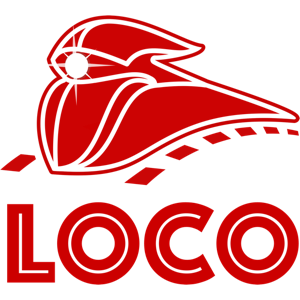
Research
Malicious npm Packages Impersonate Flashbots SDKs, Targeting Ethereum Wallet Credentials
Four npm packages disguised as cryptographic tools steal developer credentials and send them to attacker-controlled Telegram infrastructure.
loco-js-core
Advanced tools

Loco-JS-Core provides a logical structure for JavaScript code
Loco-JS-Core is a part of the Loco framework. It has been extracted from Loco-JS and can be used separately. Loco-JS-Core provides a logical structure for JavaScript code. This functionality was the origin of the Loco project. That's why it received a suffix Core.
Model–view–controller (usually known as MVC) frameworks like Ruby on Rails are trendy on the back-end. The controller's action responds to the user input and converts it to commands for the model or view.
I wanted to be sure that "the same" controller's action that handles a request on the back-end is also called on the front-end side. By "the same" - I mean an action with the same name and defined in a controller with the name corresponding to the one on the server-side. Namespacing is optional.
The preceding clarification is only for the sake of understanding the connection between the front-end and back-end parts of the Loco framework. Both parts are loosely coupled in fact when it comes to this functionality. To pass controller related information to the front-end, the back-end part uses data attributes of the <body> HTML element. These attributes can be modified in various ways. This is why Loco-JS-Core can be used as a standalone library without a specific back-end companion.
Visualization of the Loco framework:
Loco Framework
|
|--- Loco-Rails (back-end part)
| |
| |--- Loco-Rails-Core (logical structure for JS / can be used separately with Loco-JS-Core)
|
|--- Loco-JS (front-end part)
|
|--- Loco-JS-Core (logical structure for JS / can be used separately)
|
|--- Loco-JS-Model (model part / can be used separately)
|
|--- other built-in parts of Loco-JS
Loco-JS-UI - connects models with UI elements (a separate library)
🎊 Loco-JS-Core has no dependencies. 🎉
$ npm install --save loco-js-core
After the document is loaded, Loco-JS-Core checks the following <body>'s data attributes:
Then, it initializes given controllers and calls given methods based on their values. Example:
<body data-namespace="Main" data-controller="Pages" data-action="index">
</body>
Loco-JS-Core will act like this (a simplified version):
import { init } from "loco-js-core";
// all controllers are assigned to Controllers object
namespaceController = new Controllers.Main;
Controllers.Main.initialize(); // if exists
namespaceController.initialize(); // if exists
controller = new Controllers.Main.Pages;
Controllers.Main.Pages.initialize(); // if exists
controller.initialize(); // if exists
Controllers.Main.Pages.index(); // if exists
controller.index(); // if exists
What's essential is that Loco-JS-Core looks not only for instance methods but static ones as well. If some controller is not defined, Loco-JS-Core skips it. The same situation is with methods. You don't have to create controllers for every page that you have. You can use Loco-JS-Core only on desired ones. It does not want to take over your front-end. Augment with JavaScript only these pages that you want.
If the namespace controller is not defined, Loco-JS-Core skips it and assumes Controllers.Pages as a controller.
import { init } from 'loco-js-core';
import Main from './js/controllers/main';
const Controllers = { Main };
document.addEventListener("DOMContentLoaded", function() {
init(Controllers);
});
The init function returns an object with 3 properties: namespaceController, controller and action. They store instances of current controllers and the action name.
Exemplary controller:
// js/controllers/admin/coupons.js
import { helpers } from "loco-js-core";
import New from "views/admin/coupons/new";
import List from "views/admin/coupons/list";
class Coupons {
// Loco-JS-Core supports static and instance methods
static index() {
new List().render();
}
new() {
const view = new New({ planId: helpers.params.id });
view.render();
}
}
export default Coupons;
As you can see in the Usage section, Loco-JS-Core must have access to all defined controllers to initialize them and to call given methods on them. Therefore, they have to be merged with an object that holds controllers and is passed to the init function.
Example:
// js/index.js (entry point)
import { init } from 'loco-js-core';
import Admin from "./controllers/admin"; // namespace controller
import User from "./controllers/user"; // namespace controller
import Articles from "./controllers/admin/Articles";
import Comments from "./controllers/admin/Comments";
Object.assign(Admin, {
Articles,
Comments
});
const Controllers = {
Admin,
User
};
document.addEventListener("DOMContentLoaded", function() {
init(Controllers);
});
Remember to polyfill Object.assign or assign controllers using a different method.
Loco-JS-Core exports helpers object that has the following properties:
npm run test
Loco-JS-Core is released under the MIT License.
Zbigniew Humeniuk from Art of Code
FAQs
Loco-JS-Core provides a logical structure for JavaScript code
The npm package loco-js-core receives a total of 0 weekly downloads. As such, loco-js-core popularity was classified as not popular.
We found that loco-js-core demonstrated a not healthy version release cadence and project activity because the last version was released a year ago. It has 1 open source maintainer collaborating on the project.
Did you know?

Socket for GitHub automatically highlights issues in each pull request and monitors the health of all your open source dependencies. Discover the contents of your packages and block harmful activity before you install or update your dependencies.

Research
Four npm packages disguised as cryptographic tools steal developer credentials and send them to attacker-controlled Telegram infrastructure.

Security News
Ruby maintainers from Bundler and rbenv teams are building rv to bring Python uv's speed and unified tooling approach to Ruby development.

Security News
Following last week’s supply chain attack, Nx published findings on the GitHub Actions exploit and moved npm publishing to Trusted Publishers.